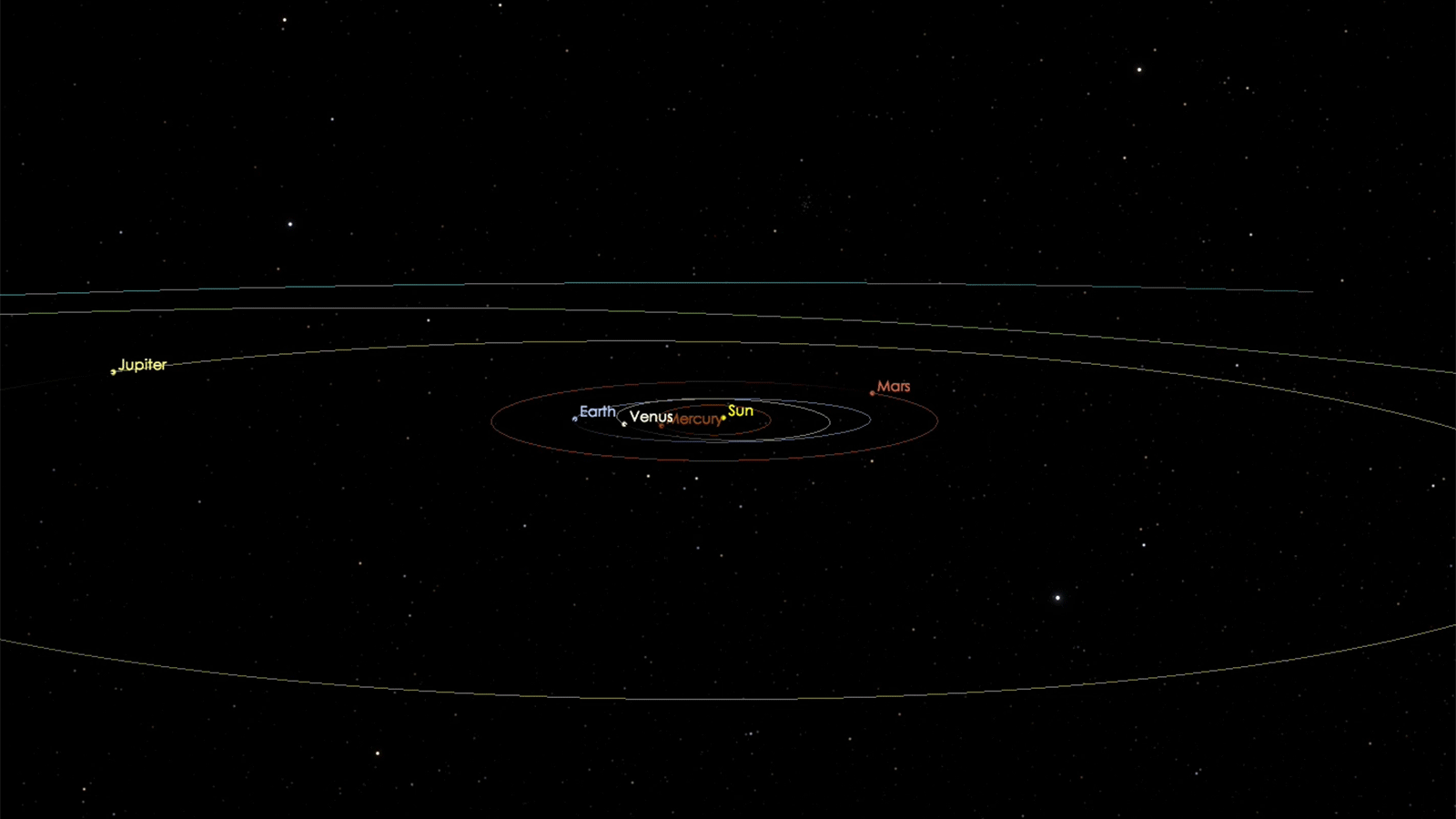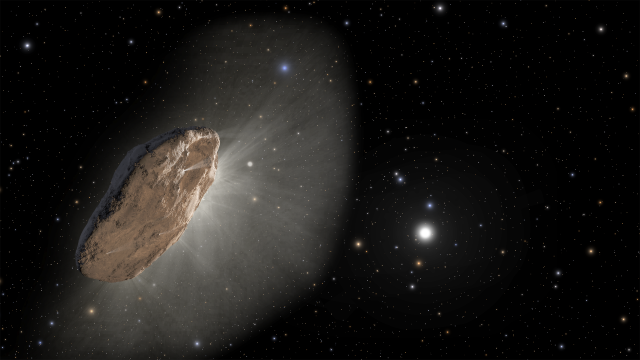In October 2017, astronomers detected an interstellar object travelling through our solar system for the first time. Theories abounded as to the nature of the oblong object, named ‘Oumuamua, which accelerated as it made its transit. Now, a team of researchers suggests a straightforward explanation: The interstellar interloper was a comet that was releasing hydrogen gas, propelling it on its way through our solar system.
‘Oumuamua — Hawai’ian for “a messenger from afar arriving first” — was theorised to be everything from an asteroid to a comet to, yes, an alien spacecraft. It had a thin, pancake- or cigar-like shape, which some scientists thought may be due to distortion by tidal forces. But ‘Oumuamua was oddly shaped for an asteroid and lacked telltale features of a comet like a tail or coma, a halo of warmed material.
The current research team suggests the hydrogen gas within ‘Oumuamua could have been released without ice on the body sublimating or producing dust, which would generate a coma. Their research is published today in Nature.
“Water is the most abundant component of comets in the solar system and likely in extrasolar systems, as well” said Darryl Seligman, an astronomer at Cornell University, in a UC Berkeley release. “And if you put a water rich comet in the Oort cloud or eject it into the interstellar medium, you should get amorphous ice with pockets of H2.”
The team posits that ‘Oumuamua had hydrogen embedded deep within it by high-energy particles like cosmic rays. When warmed by the Sun, the hydrogen entrapped in the body was released, altering its orbit.
But ‘Oumuamua was so small that the outgassing effect wasn’t visible to our telescopes, including the Panoramic Survey Telescope and Rapid Response System 1 (Pan-STARRS1), the first instrument to spot the object as it zipped through at around 315,431 km per hour. It fluctuated drastically in brightness, indicating to scientists that it was about 10 times as long as it was wide.

But the object’s non-gravitational acceleration remains a mystery to astrophysicists. Something about the object caused it to accelerate.
“While they are not wrong in saying that we don’t know for certain what ‘Oumuamua was doing when it was not being observed, the simplest assumption is that it was behaving in the same way all the time, not that it was only outgassing while we happened to be looking at it,” wrote Alan Jackson, a planetary scientist at Arizona State University who is unaffiliated with the recent paper, in an email to Gizmodo.
Jackson was the co-author of two research papers published in 2021 that suggested ‘Oumuamua was an icy chunk of an exoplanet that was ejected from a star system some 500 million years ago.
“Assuming that ‘Oumuamua was behaving in the same way during the whole of its passage through the Solar System would give a much more conservative estimate for whether their model can work,” Jackson said.
Another interstellar object, 2I/Borisov, was spotted in 2019, but that one looked a lot more like an ordinary comet. What we need, astronomers seem to agree, are more visitors like ‘Oumuamua.
“It’s unlikely that we can definitively confirm the nature of ‘Oumuamua’s non-grav acceleration,” said study lead author Jennifer Bergner, an astrochemist at UC Berkeley, in an email to Gizmodo. “But our model is generic, and therefore this mechanism is testable if we discover small comets originating in the outer solar system in the future.”
When the Legacy Survey of Space and Time camera at the Rubin Observatory in Chile becomes operational, we’ll be able to image a vast swath of the sky with regularity. Astronomers will be able to better monitor fleeting objects like ‘Oumuamua. But until more interstellar analogues fly through our system, ‘Oumuamua’s nature will remain a subject of debate.
